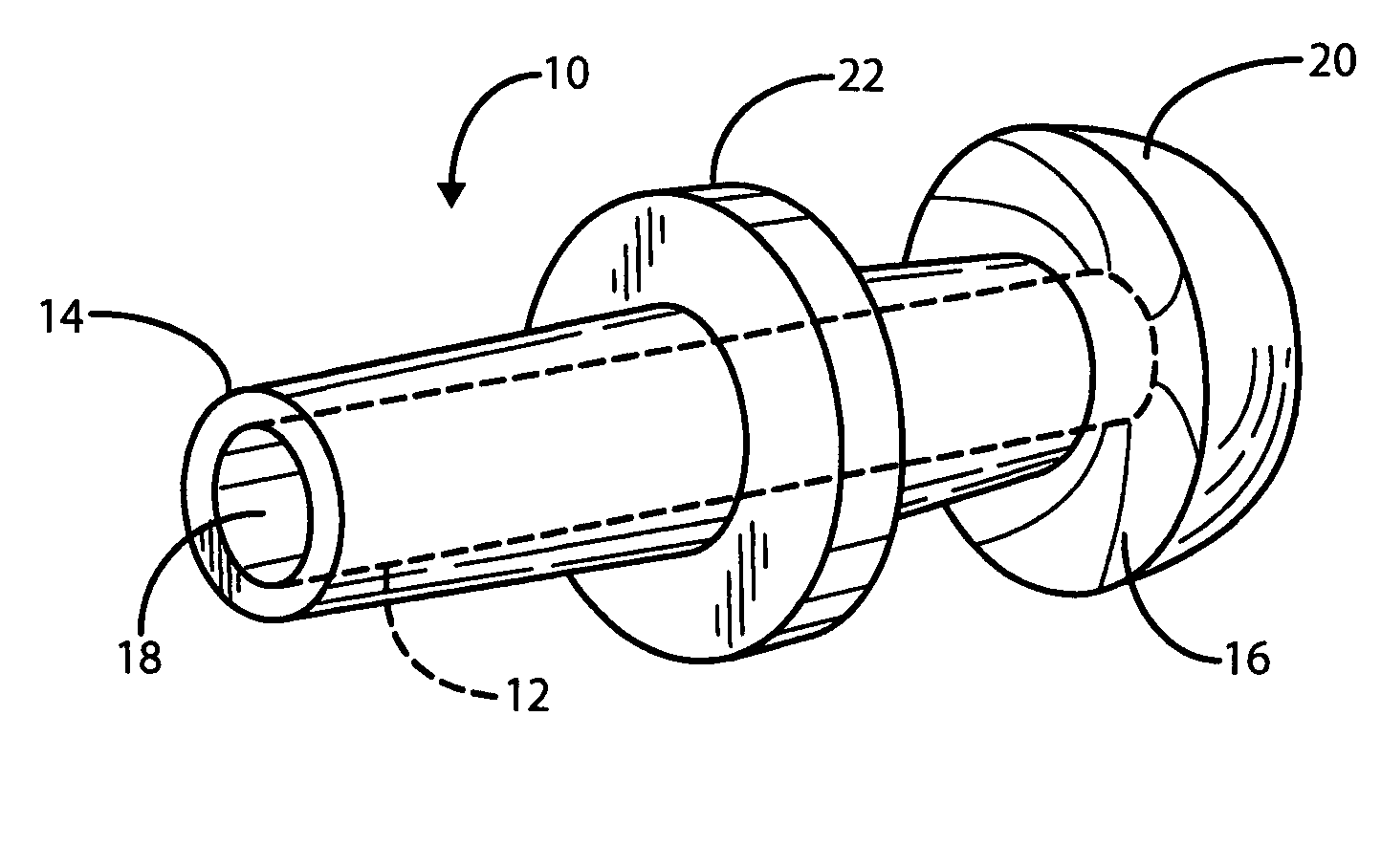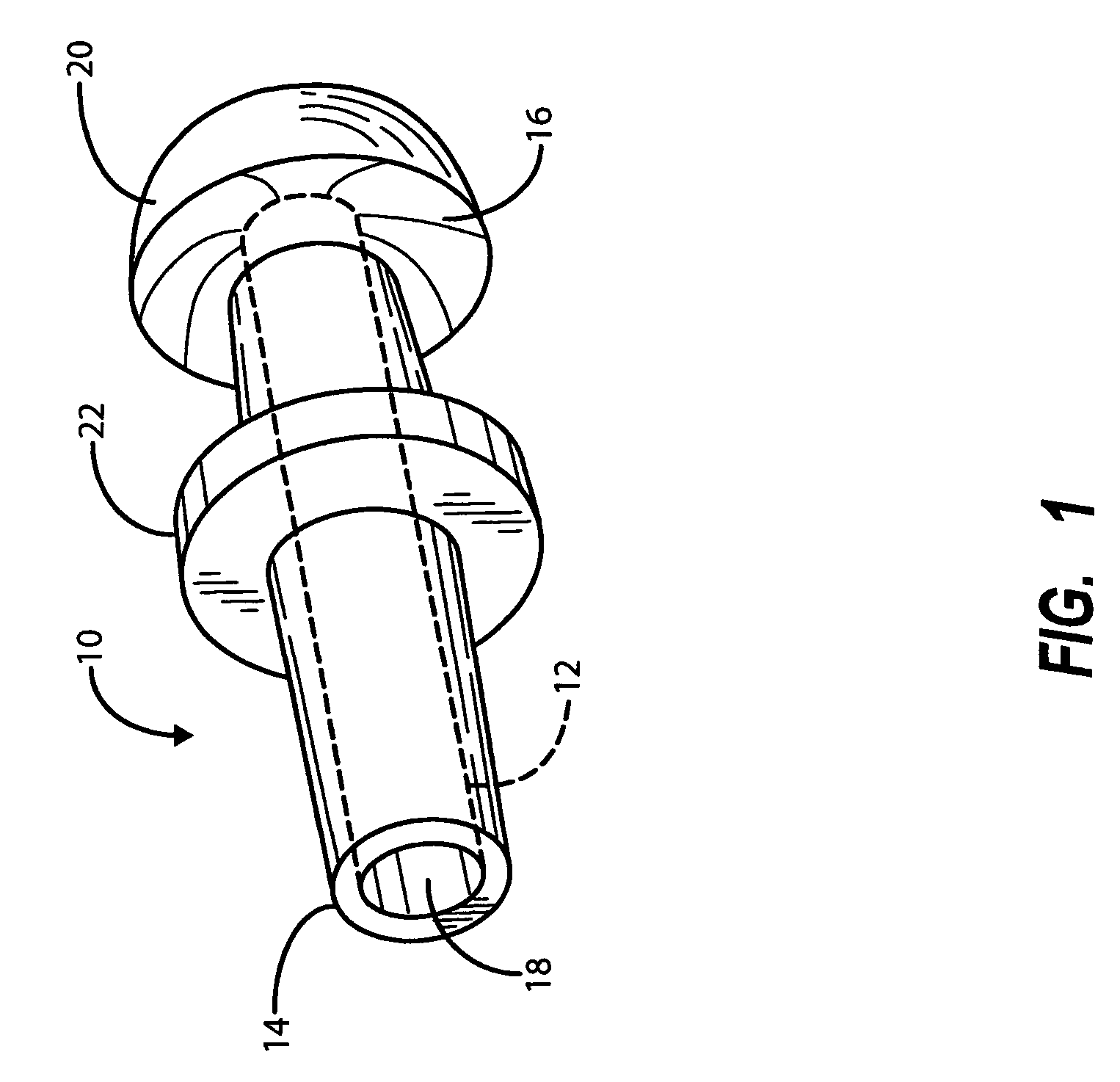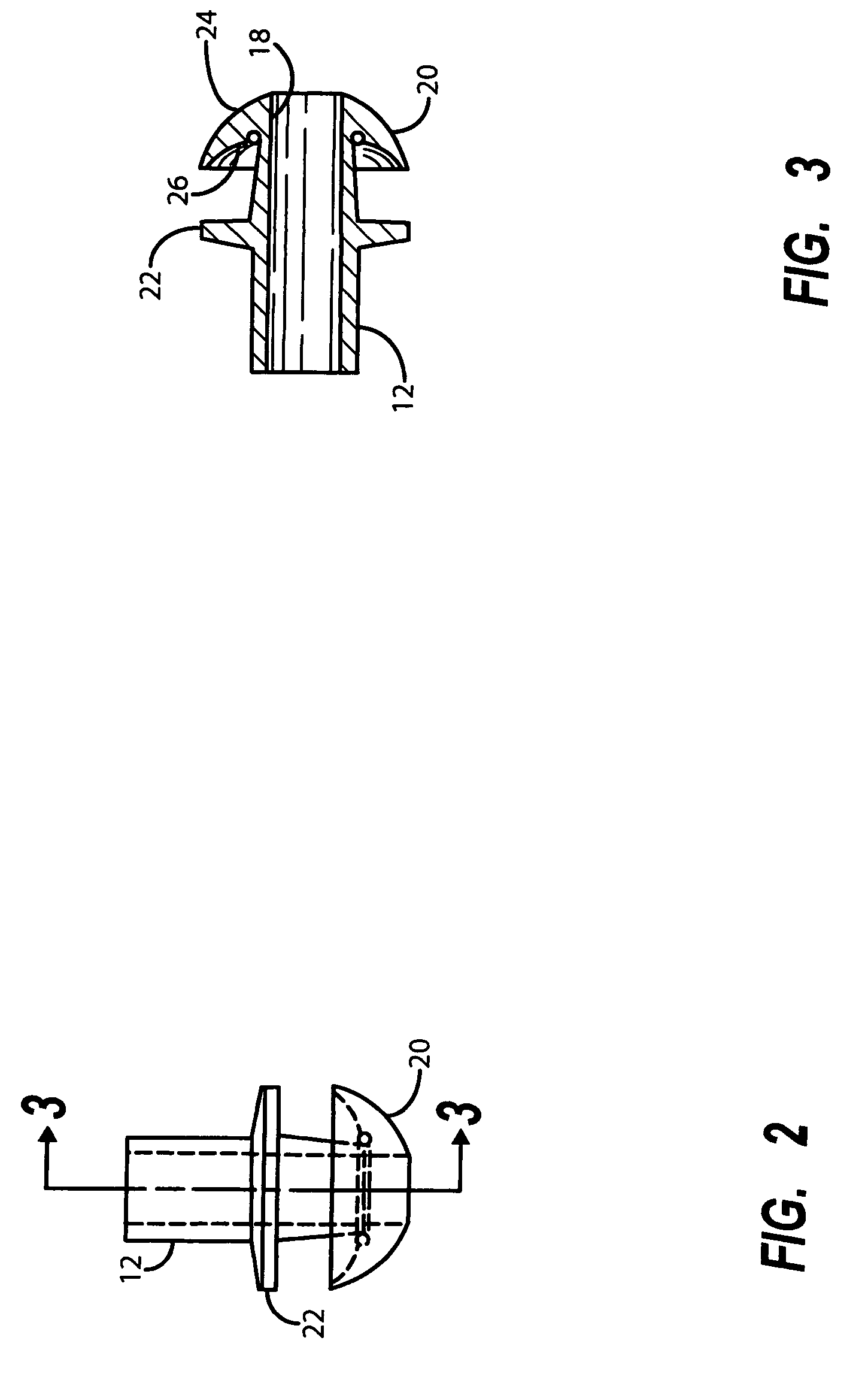Sphenoid sinus stent
a sphenoid sinus and stent technology, applied in the field of stents, can solve the problems of severe headache, increased pressure in the sinuses, runny nose, etc., and achieve the effect of easy passage back through the ostium
- Summary
- Abstract
- Description
- Claims
- Application Information
AI Technical Summary
Benefits of technology
Problems solved by technology
Method used
Image
Examples
Embodiment Construction
[0022]Referring first to FIG. 1, there is shown a isometric view of a stent especially designed for placement in the ostium of the sphenoid sinus in the treatment of sphenoid sinusitis. It is indicated generally by numeral 10 and comprises a soft compressible plastic tube 12 of a predetermined outer diameter and having a proximal end 14, a distal end 16 and a lumen 18 extending therebetween. A distal end portion of the tube 12 is tapered and terminates in a integrally formed, generally hemispherical hollow dome 20 whose diameter is greater than the predetermined diameter of the plastic tube 12. The lumen 18 extends all the way through the surface of the dome 20.
[0023]A short predetermined distance proximal of the distal end 16 of the tube 12 is an integrally formed, radially extending flange 22, the diameter of which is generally equal to the diameter of the hemispherical dome 20. The stent is preferably formed in a molding operation from a suitable plastic. Without limitation, the ...
PUM
 Login to View More
Login to View More Abstract
Description
Claims
Application Information
 Login to View More
Login to View More - R&D
- Intellectual Property
- Life Sciences
- Materials
- Tech Scout
- Unparalleled Data Quality
- Higher Quality Content
- 60% Fewer Hallucinations
Browse by: Latest US Patents, China's latest patents, Technical Efficacy Thesaurus, Application Domain, Technology Topic, Popular Technical Reports.
© 2025 PatSnap. All rights reserved.Legal|Privacy policy|Modern Slavery Act Transparency Statement|Sitemap|About US| Contact US: help@patsnap.com



